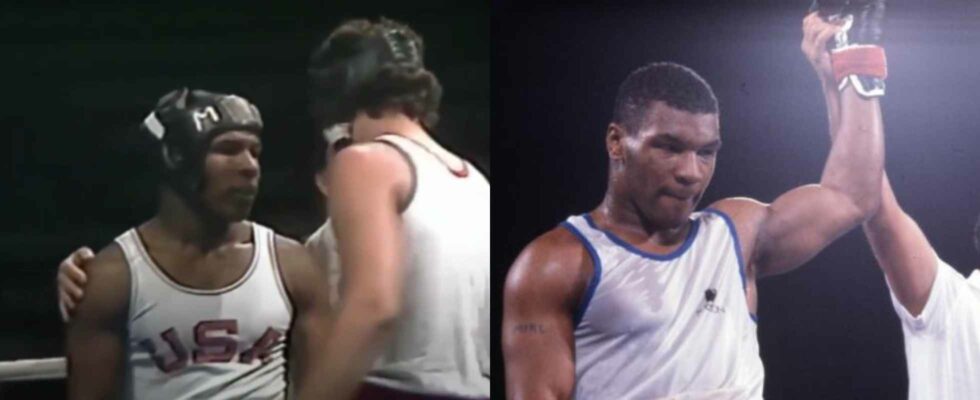Mike Tyson was obliged to provide his baptismal certificates as proof that he was 14 years old as nobody believed his age when he was coming up.
The legendary coach Cus D’Amato served as future heavyweight world champion Mike Tyson’s coach at the renowned Catskill boxing club. Bruce Silverglade oversaw the amateur circuit during that time. When Tyson’s bouts were scheduled, he was in charge.
Silverglade now operates the renowned Gleason’s boxing club. He says that he had to go to great lengths to establish Iron Mike’s age.
He said to SunSport:
“We had a hell of a time. He filled out when he was 14 years of age and in the junior Olympics, it’s based off age.”
“So at the time, ten-year-olds could fight 11-year-olds and so on. No one would ever believe his age, he was a man, he looked like a man. He was 14 and he looked like a fully developed man. So we would have birth certificates, baptism papers, passports.”
“No one would believe he was a kid. We had a lot of problems, but he was great.”
Before turning 16, Tyson won the junior Olympic gold medal twice. Teddy Atlas was his coach at the time. He later had a Hall of Fame career as a trainer.
The two would go to Gleason’s gym in Brooklyn to box from the sleepy Catskill settlement in upstate New York, which has a population of only 4,000.
Silvergade stated:
“In the Catskills, it was a very small gym, there was no sparring, so when he had to prepare for any of his fights, he would come here. Teddy Atlas – who was one of our trainers – was the one working with him at the time. So he brought Tyson into Gleason’s.”
“They spent many, many hours training here at Gleason’s. He lived up in the Catskills which was an hour north of here. So obviously he didn’t train here on a daily basis but he’s from Brooklyn, it wasn’t far from here.”
When Tyson defeated Trevor Berbick in 1986, he did it at the age of 20. Tyson became the sport’s youngest heavyweight champion ever.
He continued to divide his time between Brooklyn and the Catskill throughout his dreaded heyday. So Silverglade had a front-row view of Iron Mike’s legendary ascent.
However, Tyson’s fall from glory after his shocking defeat to James “Buster” Douglas in 1990 was just as noteworthy.
Silvergade continued:
“The thing with Mike, until he lost in Japan as a pro, he won many of his fights just through intimidation. People read about him, they heard about how invincible he was, so people were intimidated by him before they even went in.”
“One of the biggest upsets in my mind was Michael Spinks – I loved Michael Spinks, I was with him in 1976 up in Montreal when he won the Olympic gold medal. I thought he was a terrific amateur, he was a great light-heavyweight champion, he became heavyweight champion, tough as nails.”
“He went in with Mike Tyson and he lost in the first round. He froze up – he was like a dear in the headlights, through intimidation. But if you look at his record after his defeat in Japan, he had a losing record.”
“Because people said, ‘Hey, he’s not invincible. He can be beaten’.”
Tyson retired in 2005 and is still regarded as one of the greatest boxers ever. Moreover, Silverglade was honored with a spot in the New York State Hall of Fame in 2015. He continues to oversee the venerable Gleason’s gym.
The gym owner has been in charge for 40 years and has welcomed people like Floyd Mayweather, Roberto Duran, and Muhammad Ali inside his facility.
